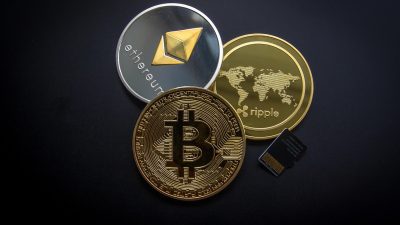The New Digital Economy
With Meta and Google investing heavily in the Metaverse and Web3, the lines between the digital and physical worlds are rapidly blurring. But what does this mean for crypto and the future of technology?
The emergence of the Metaverse and the Web3 revolution has attracted significant attention from some of the biggest tech companies in the world. Meta (formerly Facebook) and Google are two giants that are heavily investing in these technologies, betting on the future of digital decentralisation, virtual reality (VR), and cryptocurrency. While these innovations promise to reshape the way we interact online, the integration of crypto into the Metaverse and Web3 could have far-reaching effects on finance, commerce, and social interaction. In this blog, we’ll explore how Meta and Google are positioning themselves in the world of crypto and Web3, and what their investment could mean for the future of the internet.
Meta’s Investment in the Metaverse: The New Digital Economy
When Mark Zuckerberg rebranded Facebook to Meta in 2021, it was clear that he was shifting the company’s focus from social networking to the creation of a fully immersive Metaverse. But why is Zuckerberg so invested in the Metaverse, and how does it connect to cryptocurrency and Web3?
The Metaverse is essentially a virtual world where users can interact with each other and their environment in a fully immersive way, often using virtual reality (VR) or augmented reality (AR) technology. In this world, digital assets like NFTs and cryptocurrencies play a crucial role in facilitating transactions and ownership.
Meta’s plan to build the Metaverse involves significant investment in hardware, including the Oculus VR headset, which aims to make virtual reality more accessible to the masses. By integrating crypto into this environment, users can buy, sell, and trade digital goods and services, creating a virtual economy.
Meta’s Web3 initiatives also revolve around decentralisation. In a Web3 world, the power of the internet would shift from centralised entities like Meta and Google to users themselves. Blockchain technology would allow for peer-to-peer transactions and self-sovereign identities, reducing reliance on intermediaries and providing a more democratic and transparent way of operating online.
Meta has already explored the integration of cryptocurrencies within its platforms. In 2021, it began experimenting with NFTs on Instagram, allowing creators to sell their digital art directly on the platform. This move aligns with the broader trend of companies within the Metaverse embracing blockchain and crypto technologies.
Google’s Strategic Focus on Web3 and Crypto
Unlike Meta, which is heavily focused on the Metaverse and virtual worlds, Google is taking a more subtle yet strategic approach to the future of Web3 and cryptocurrency. Google Cloud, the tech giant’s cloud computing division, has partnered with a number of blockchain-based projects, offering services to help them scale and integrate Web3 technologies. But Google’s commitment to Web3 and crypto goes beyond just cloud services.
In 2022, Google Cloud partnered with Hedera Hashgraph, a leading public blockchain platform, to provide enterprise-grade cloud services for decentralised applications (dApps) built on the blockchain. This partnership demonstrates Google’s interest in enabling the development of decentralised applications, which is a core aspect of Web3.
In addition to cloud computing, Google has been investing in cryptocurrency storage solutions. For example, Google has been working with companies like Coinbase to enable cryptocurrency transactions within its Google Pay platform. This opens up the possibility for Google Pay users to store, send, and receive cryptocurrencies like Bitcoin, Ethereum, and Stablecoins seamlessly.
Although Google has been less vocal about its investments in the Metaverse compared to Meta, its strategic focus on Web3 is evident. By partnering with blockchain platforms and integrating cryptocurrencies into its payment systems, Google is positioning itself as a key player in the future of decentralised finance.
The Intersection of Web3, Metaverse, and Crypto
Both Meta and Google see the potential of crypto in transforming the internet. As the Metaverse and Web3 continue to evolve, the blockchain will play a central role in their development, allowing users to own and trade digital assets seamlessly.
- Metaverse and Crypto Economy: Within the Metaverse, cryptocurrency could replace traditional fiat currencies, allowing for faster, cheaper, and more secure transactions. NFTs could be used to represent ownership of virtual land, art, and items, while stablecoins could be used for everyday transactions within virtual worlds.
- Decentralised Applications: Web3 technologies aim to decentralise control of the internet. With Google’s investment in Web3, decentralised applications built on blockchain technology could disrupt industries like finance, entertainment, and social networking. Google’s infrastructure could provide the scalability needed for these applications to thrive, while also giving users greater control over their data.
Digital Identity and Security: Blockchain technology offers users the ability to maintain a self-sovereign identity, where their personal data is securely stored and only accessible by them. This has profound implications for privacy and security in the Metaverse, where digital interactions need to be safeguarded.




